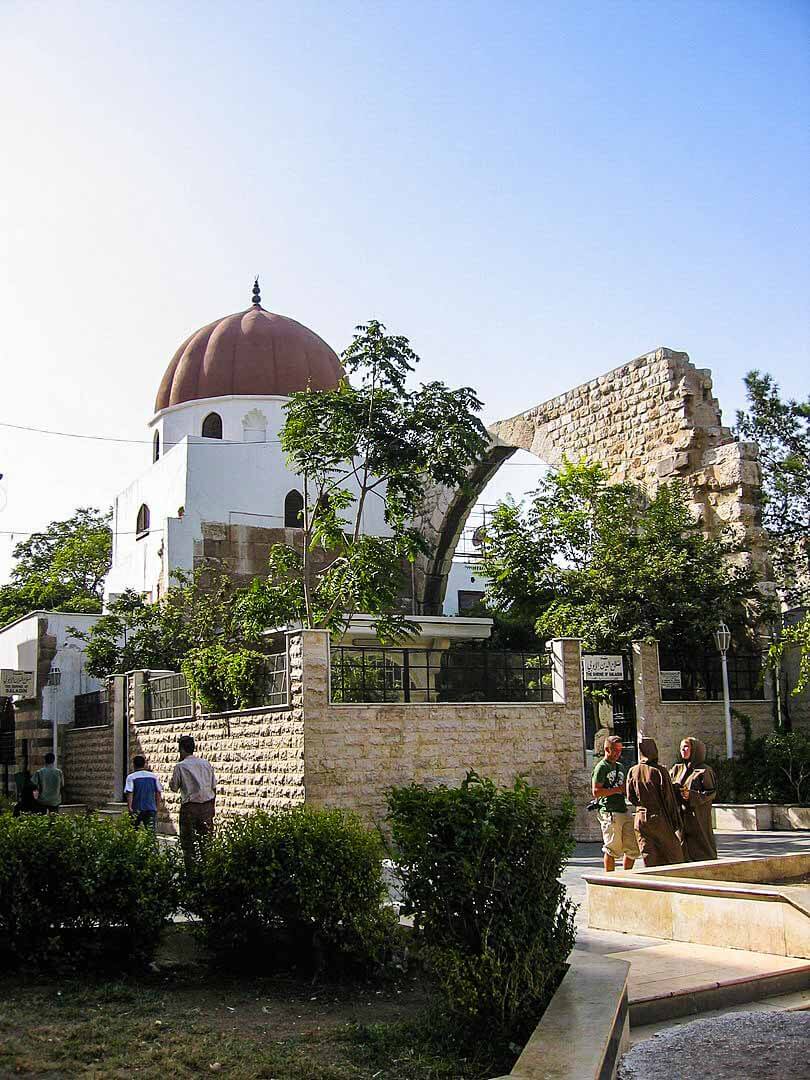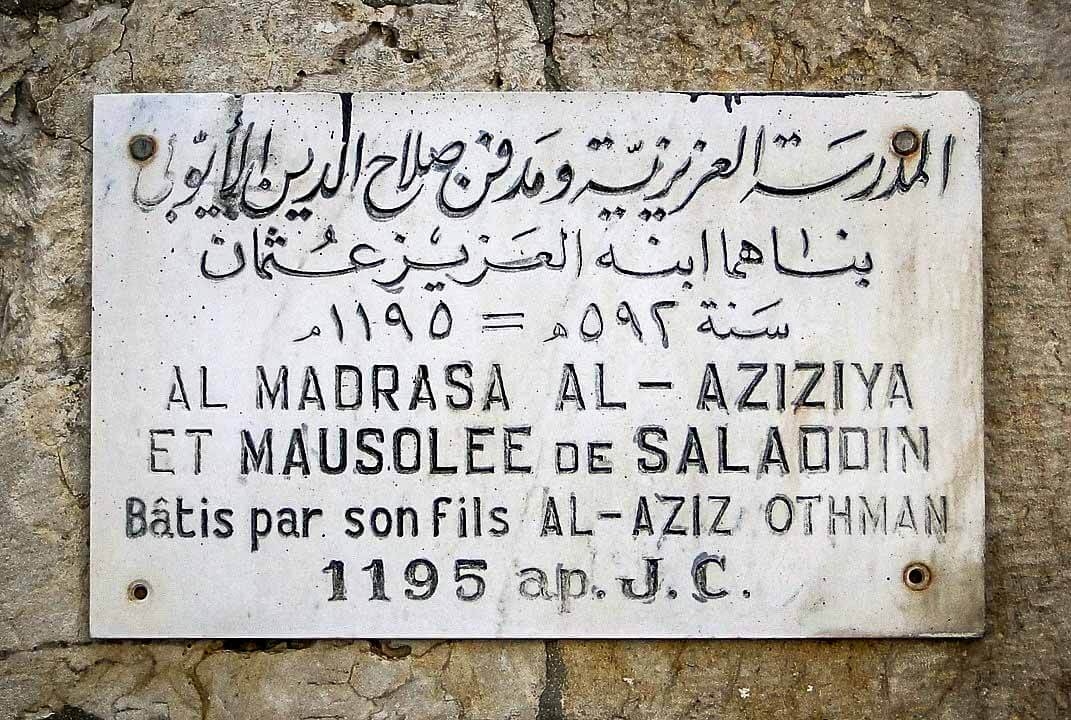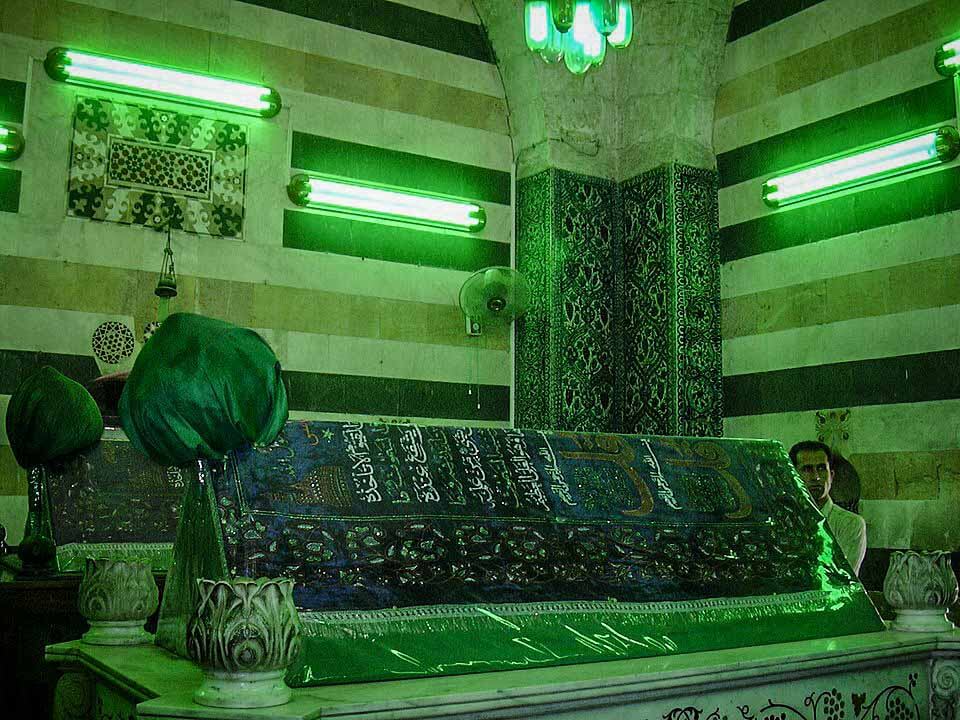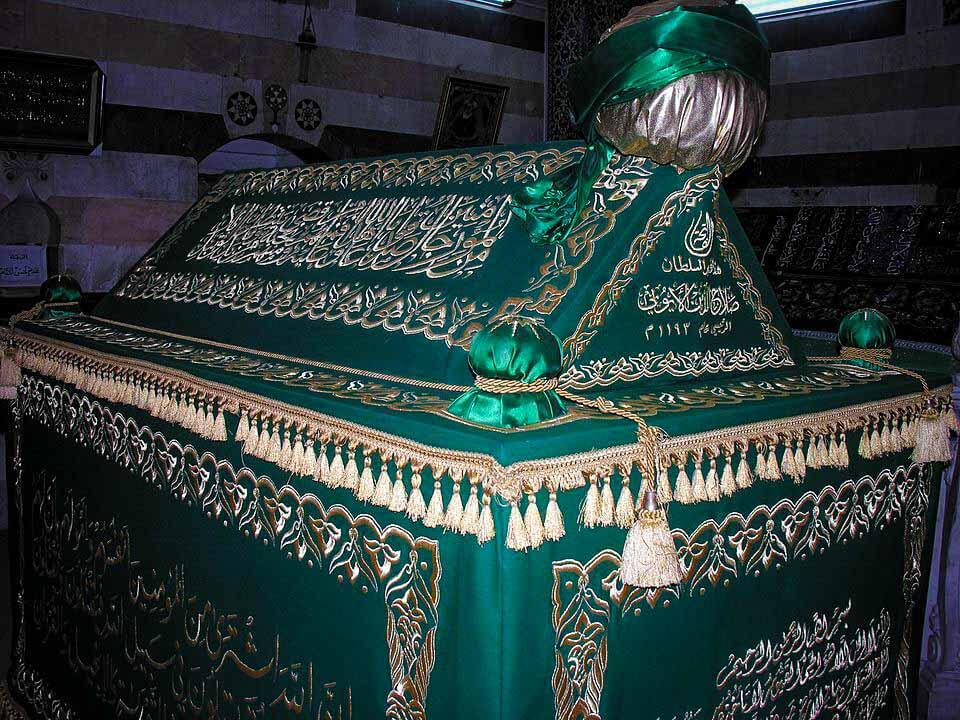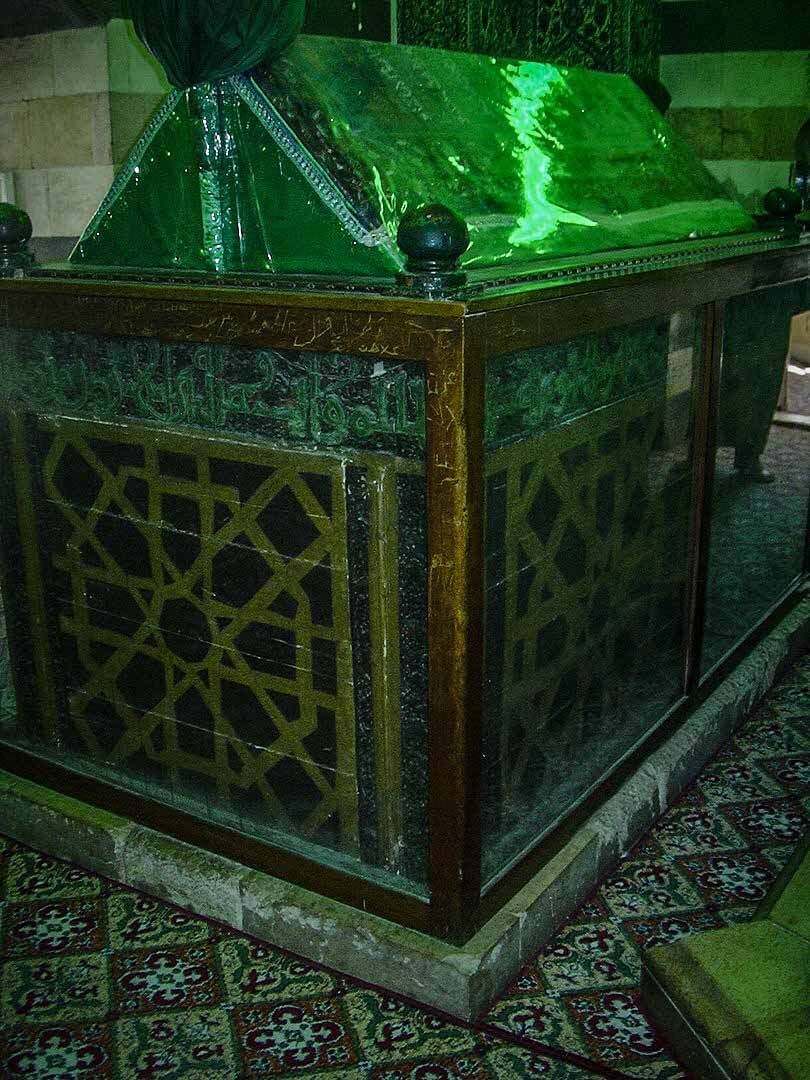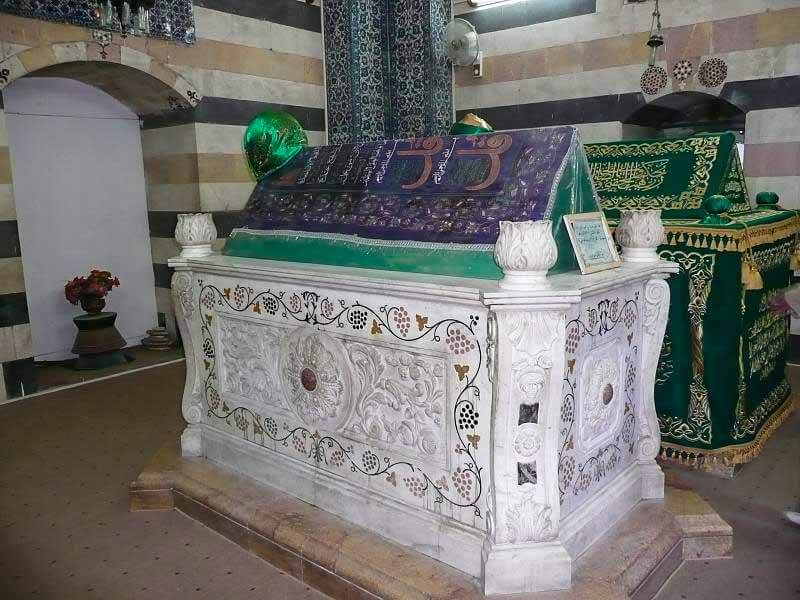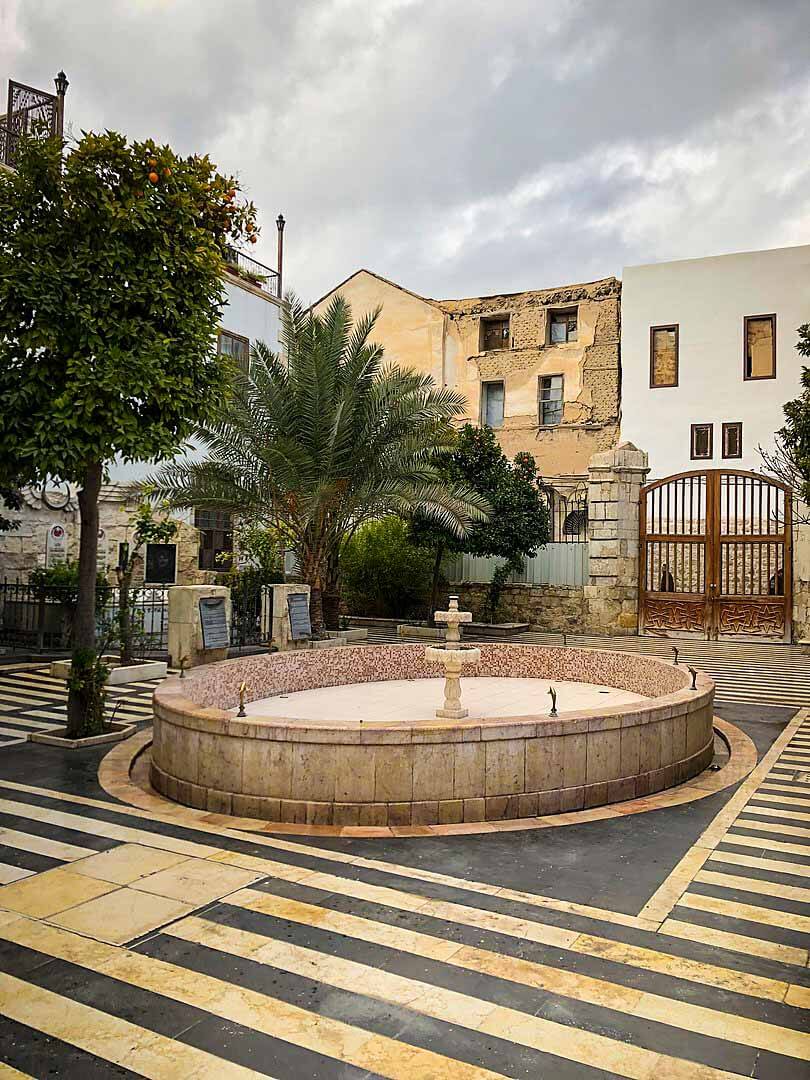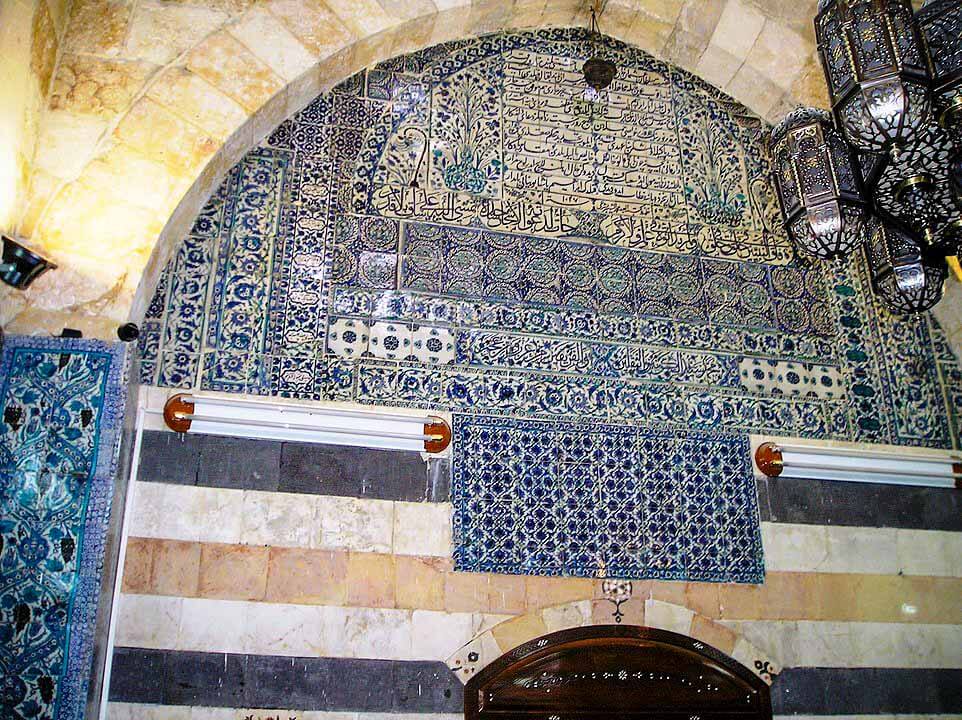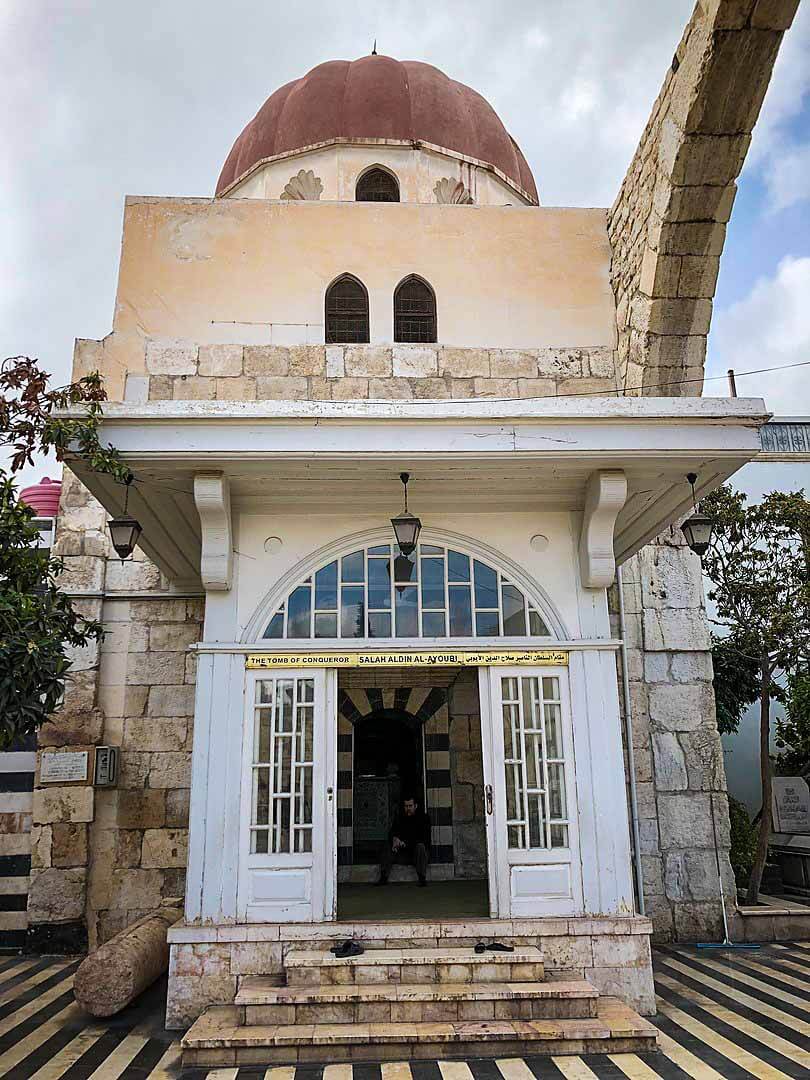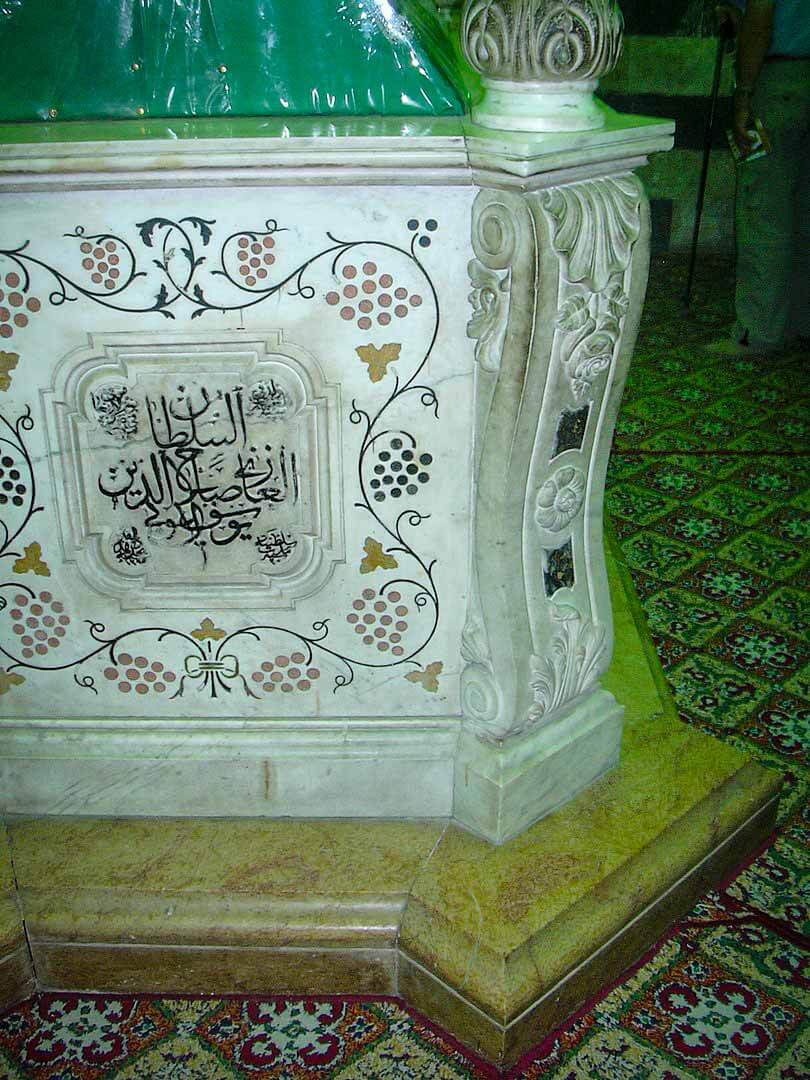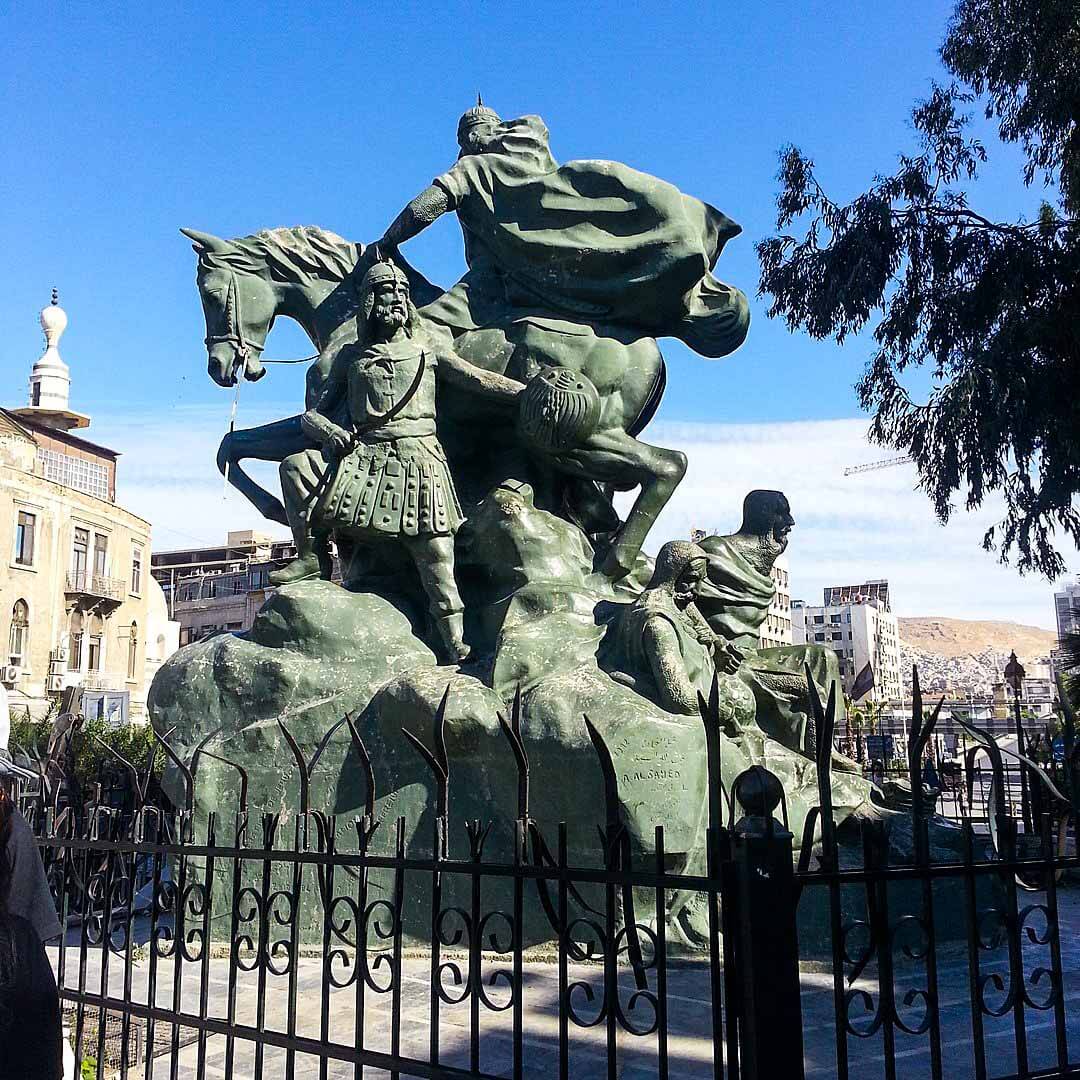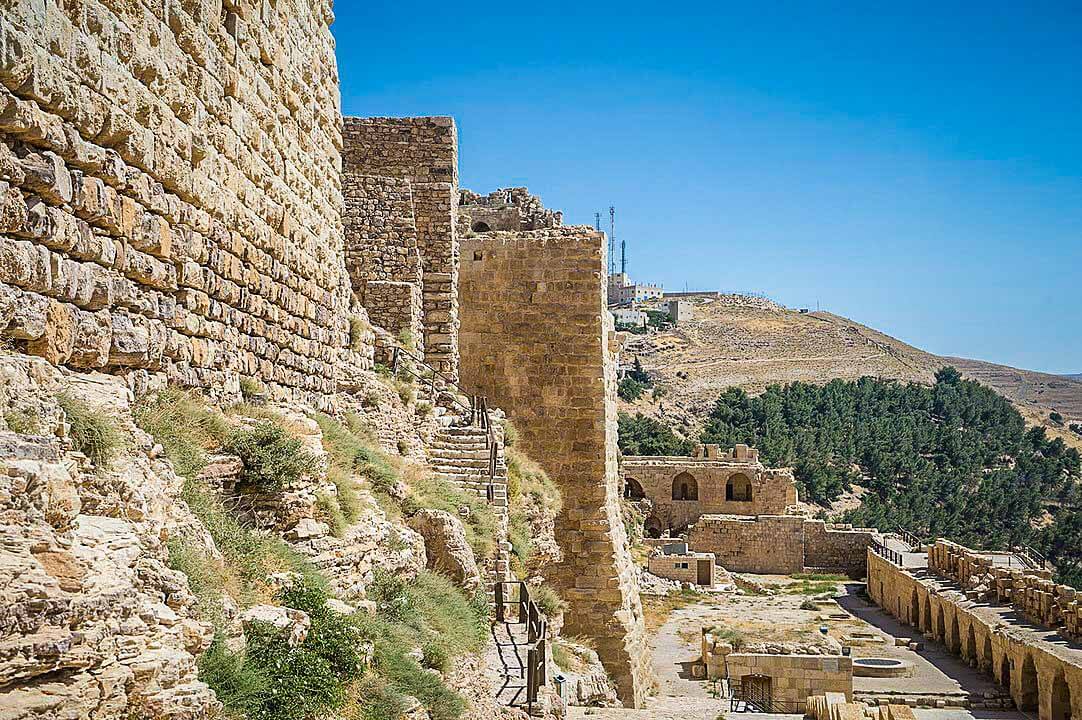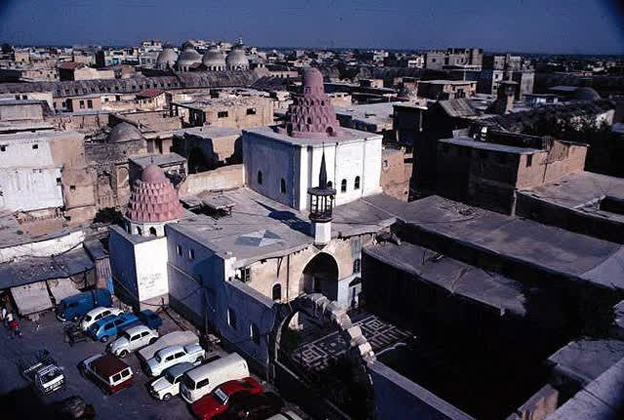Damascus, Syria
Coordinates: 33.512167, 36.306023
An-Nasir Salah ad-Din Yusuf ibn Ayyub, known as Salah ad-Din or Saladin, was the founder of the Ayyubid dynasty and the first to hold the title of the Custodian of the Two Holy Mosques.
A Sunni Muslim of Kurdish ethnicity, Hz. Salahuddin رحمة الله عليه led the Muslim military campaign against the Crusader states in the Levant.
During his reign at the height of his power, his empire included Egypt, Syria, Upper Mesopotamia, the Hejaz, Yemen and other parts of North Africa.
He was born in Tikrit, Iraq, to a Kurdish family coming from Dvin, Armenia.
He was sent along his uncle Shirkuh to Egypt by the Zangid ruler of Syria and some Upper Iraq, Hz. Nurad-Din رحمة الله عليه, to intervene in it, among others, against the crusaders.
He and his uncle repelled crusaders and became the rulers of Egypt, originally nominally as the visiers of the Shia caliphs of Egypt, Fatimids.
But Hz. Salahuddin رحمة الله عليه deposed the Fatimids in 1171, recognising the rule of Hz. Nur ad-Din رحمة الله عليه and of the Sunni Abbasid caliphs of Baghdad.
After the death of his suzerain, he captured most of his former lands, and subdued Yemen earlier on too.
He defeated the crusaders in Hittin battle 1187 and captured Jerusalem, which he successfully defended against the 3rd crusade, which managed to captured the coast of Palestine though.
Mausoleum
The Mausoleum of Salahuddin Ayyubi holds the resting place and grave of the medieval Muslim Ayyubid Sultan Hz. Salahuddin Ayyubi رحمة الله عليه.
It is adjacent to the Umayyad Mosque in Damascus, Syria.
It was built in 1196, three years after the death of Hz. Salahuddin Ayyubi رحمة الله عليه
Originally the tomb complex included the burial of Hz. Salahuddin رحمة الله عليه and Madrassah al-Aziziah of which little remains except a few columns and an internal arch adjacent to the renovated tomb of Hz. Salahuddin رحمة الله عليه.
The mausoleum presently houses two sarcophagi: one made of wood, said to contain Hz. Salahuddin’s رحمة الله عليه remains, and one made of marble, was built in homage to Hz. Salahuddin رحمة الله عليه in late nineteenth century by Ottoman Sultan Abdulhamid II and was later restored by German emperor Wilhelm II.
Along with a marble sarcophagus, Wilhelm II, a golden ornate gilt bronze wreath was also put on the marble sarcophagus, which was later removed by either Faisal I or Lawrence of Arabia who later deposited it in the Imperial War Museum.
The Saladin Mausoleum located a short walk from the Omayyad Mosque is a must see while sightseeing in the Old Town of Damascus.
For 500SYP ($1.25) you can enter both the mosque and the Tomb of this great conqueror. You would miss it’s location of you didn’t know where to go but it is located behind the ticket office for entrance to the Omayad Mosque.
It is silently tucked next to the great Ummayah mosque. The way it has been preserved is exceptional. One can even see roman and greek columns from civilizations ago outside the mausoleum which make this historical experience even more special.



